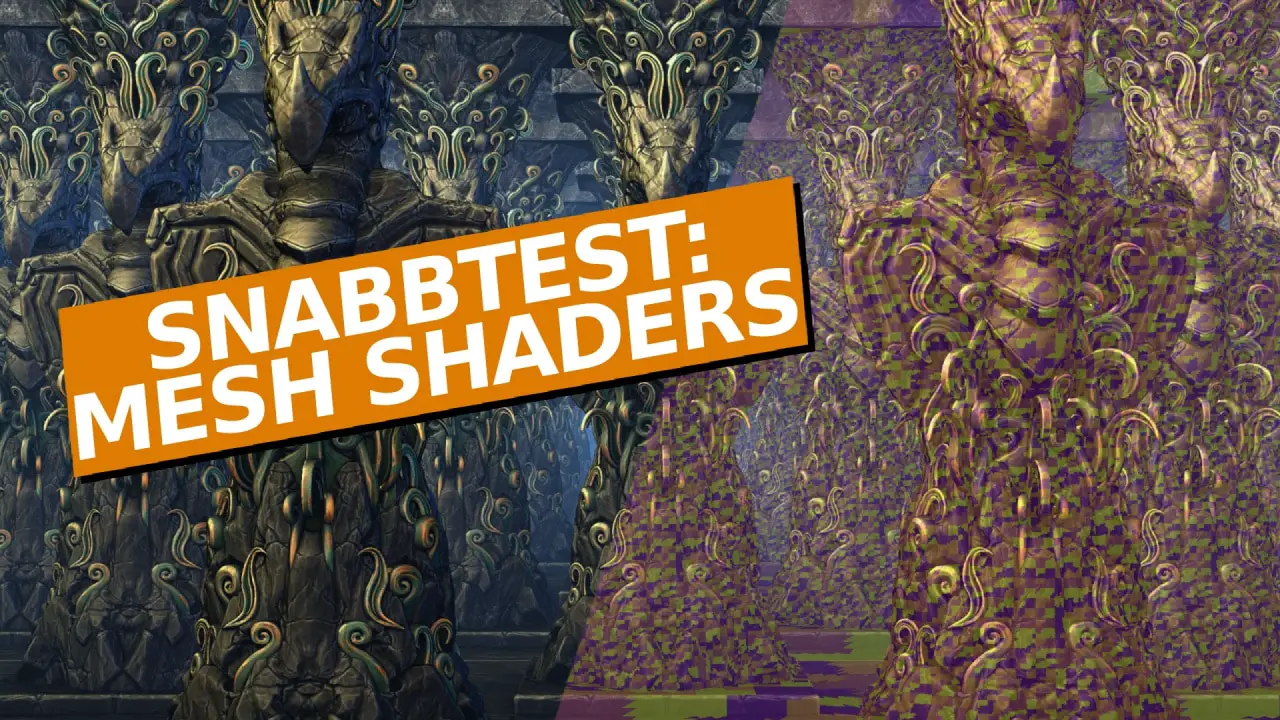As new graphics technologies are introduced to the market, Finnish UL updates its 3DMark test suite with performance tests that use the news. The latest in line is mesh shaders, which are part of DirectX 12 Ultimate and currently only work with the Nvidia Geforce RTX 2000, RTX 3000 and AMD Radeon RX 6000 series.
Mesh shaders are the third of four components in DirectX 12 Ultimate. Where the first two are already available in games in the form of Ray Tracing and Variable Rate Shading (VRS). The fourth and final part is so-called Sampler Feedback and is not yet available in any game on the PC platform. Just Sampler Feedback will benefit greatly from the upcoming Direct Storage, which means that we will have to wait until the end of the year before it becomes a reality.
The purpose of Mesh Shaders is to provide higher performance, simplify development and increase detail. In practice, the technology and its associated Amplification Shaders will replace the previous pipeline consisting of Vertex and Geometry Shaders. Above all, Mesh Shaders is significantly better at taking advantage of the graphics processors’ powerful parallelization and offers significantly more flexibility than previous solutions as they mimic a Compute Shader.
Nvidia has published a video that visualizes the technology and for those who really want to dig in, Microsoft has uploaded its own video on the subject.
Components of the test systems
Component | model | Thanks to |
|---|---|---|
Processor | Intel Core i9-10900K @ 5,0 GHz | Inet |
Motherboard | Asus ROG Maximus XII Hero Wi-Fi | Asus |
Memory | 2× 16 GB G.Skill Trident Z Royal | G.Skill |
Graphics card |
| |
Cooling | Noctua NH-D15 | Noctua |
Storage | Samsung 970 Evo M.2, 1 TB | Samsung |
Power supply | Seasonic Prime Ultra Titanium, 1 000 W | Seasonic |
Chassis | Streacom BC1 Open Benchtable | Streacom |
Screen | Dell P2415Q | |
Operating system | Windows 10 Professional 64-bit (2004) | |
To test Mesh Shaders, the editors use their standard graphics card tester system, led by an Intel Core i9-10900K, which is overclocked to 5.0 GHz over all ten cores. There is also 32 GB of primary memory in the memory frequency 3,600 MHz and fairly tight timings. Of course, there are a few other components that you can see above, but the processor and primary memory are most interesting according to the undersigned, where these give the graphics cards plenty of room to stretch their legs.
The test itself runs through the same loop twice, the first without Mesh Shaders and the second time with it enabled to finally get results presented when everything is ready. The test was run a couple of times with a restart between each to ensure that the numbers are correct. Our tests also show that the results were quite consistent each round.
Mesh Shaders av | Mesh Shaders on | |
|---|---|---|
Nvidia Geforce RTX 2080 Super (8 GB) | 76 FPS | 426 FPS (+561%) |
Nvidia Geforce RTX 3080 (10 GB) | 68 FPS | 593 FPS (+872%) |
AMD Radeon RX 6800 XT (16 GB) | 31 FPS | 557 FPS (+1797%) |
With the numbers in hand, there is a huge increase of several hundred percent when Mesh Shaders is activated. The Nvidia Geforce RTX 3080 stays just below 600 FPS, which would be crazy high in a modern game. The AMD Radeon RX 6800 XT is not far behind. As expected, the previous generation Geforce RTX 2080 Super is a bit behind, but strangely enough has the highest frame rate when Mesh Shaders is turned off.
To return to what is interesting and above all the main purpose of the article, Mesh Shaders gives a huge increase in performance in 3DMark’s synthetic tests. From a performance perspective, of course, a synthetic test like this is excessive and how future games use the feature will be exciting to see.















